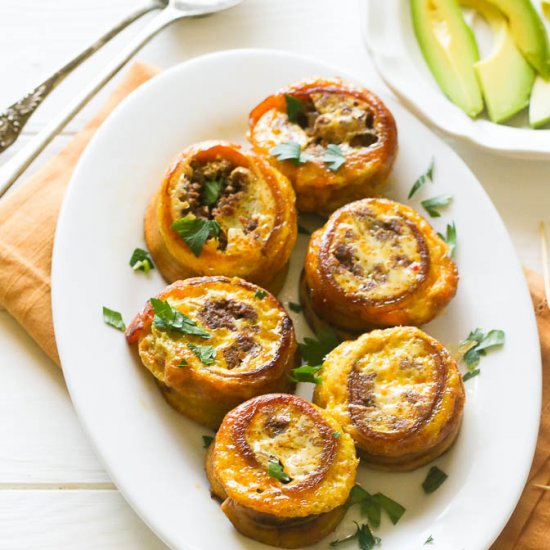We knew this woman years ago. I
disliked her the moment we were introduced. We rarely saw her, except around
the holidays, so as we approach the holidays, I sometimes think of her. I
remember having a ridiculous conversation with her as she told me that her
boyfriend’s family knew how to have a really classy Christmas. “They’re white,”
she explained. “They had lasagna.” She was very impressed. “Really classy,” she
repeated it in case I missed it.
Soon she began speaking in pronouncements, Her Majesty did...
I was a little confused because I had spent
a cringe-worthy twenty minutes in a fruitless and joyless conversation with her
guest (whom I found out was both her boss and lover). The topic of the
traditional Hanukkah lasagna had not come up, but he did spend a good portion
of the time we were speaking loudly telling me how no one present has living
life properly. He had an opinion about how we were each wrong in our approach
to [pick a topic]. I drank a LOT that night.
There was no joy in knowing that uppity twit, especially because her premise was that she'd outgrown being Latina and she ascribed true class only to white folks. Her self-hate made me sad. Puerto Ricans tend to relish telling people their soul is stained by plantains. But she was not one of us and her pride tended towards other qualities beyond her ethnicity or nationality. But this is about food, don't worry about whatever happened to her.
That story comes to mind every time I see
the gastro types in Puerto Rico trying to "elevate" the local cuisine, from its "humble, peasant and slave origins." Last spring I saw a recipe circulating around the interwebs about Puerto
Rican lasagna… Huh? I was curious
what this newfangled pasta dish could be. It turned out to be a pastelón. Not that everything involving alternating layers should be called or likened to a lasagna.
I wrote about it a
few years back and included a recipe in the cookbook. A pastelón is a big, meat
pie. In the Caribbean there are a few varieties, but traditionally the filling
is made of picadillo. Picadillo means chopped or minced (meat). What makes the
pastelón unique is a plantain crust—which also makes it gluten free.
In Puerto Rico, the
"crust" is generally made of slices of ripe plantain fried to a golden
crispness. In the Dominican Republic, the crust is made of extra ripe mashed
plantains. I've seen a Cuban combine the two and create a delicious hybrid (mashed bottom and slices up top). Of course, varieties abound and every Caribbean mother and grandmother has her
own recipe!
Pastelón can be made
with chicken or shrimp fillings too; and, it is rumored, there are vegetarian
recipes floating about. While the pastelón is a meal in itself, it can be
served with a simple tossed salad, or a little rice. Macaroni salad is
surprisingly good with it as well.
1 lb ground beef
2 tbs oil
1 small diced onion
Crushed garlic (to
taste)
1 small green pepper
1 tbsp tomato paste
1 tsp oregano
Black ground pepper
Heat oil in pan and
sauté onion, garlic and pepper until softened. Add the meat and brown. Add
tomato paste and herbs, season and mix. Cook for about 10 minutes on medium
heat until meat is fully cooked.
To season you may
use a dash of salt or a packet of sazón. As an alternative, you may also season
the meat before cooking with a few dashes of Worcestershire sauce. You may add
a third to a quarter cup of water (which you'll allow to evaporate). You may
substitute with red wine vinegar or cooking wine. And, if your heart can take
it, a dash or two of hot sauce can add another dimension to the taste. Instead
of green peppers, you may substitute with sweet and hot chilies.
The picadillo can
include any of the following, depending on your taste: raisins, diced green
apples, salad olives with pimentos. You can also add about a cup of frozen
peas, green beans or corn (or use mixed vegetables that come already diced for
your convenience) -- add at the last minute of cooking to heat through and mix
thoroughly.
Ultimately, what you
want is moist but not saucy filling.
You can prepare the
picadillo a few days ahead and refrigerate. This also allows all the flavors to
marry. Heat slightly before filling pastelón or bring to room temperature.
YES: as I always
encourage, be a rebel, make it your own.
I’m giving you the basic steps, you
run with it as you wish!
6 ripe plantains
(dark skin)
1/4 cup of unsalted
butter
1 cup of grated
sharp cheddar cheese
Cut the ends off the
plantains, cut in halves or thirds lengthwise, and split the skins (see the
archived article on plantains for a more detailed explanation). Place in pot of
salted water and boil for about 10 minutes or until very tender. Drain water
and remove peels.
Mash plantains with
a fork, add soft butter and incorporate into the mashed bananas.
Spray a baking dish
(you may use a pie dish or even a lasagna pan, depending on what you have
available). Spoon half the plantain mixture on the bottom and smooth out the
layer, top with a third of the cheese and a layer of meat. Add cheese to top
the meat. Spoon the rest of the plantain mixture and top with cheddar. [NOTE: This
is a skinny version, but you can add about 2 or 3 large eggs, beaten, as a
binder.]
Place in oven,
preheated to 350° F and heat through until cheese is melted and golden brown
for about 30-40 minutes. Cooking time depends on whether the filling is already
warm, of course.
The result is an
enchanting combination of sweet and savory (and picante) flavors. The textures
go from soft to crunchy. The bananas harden on the outside to literally create
a crust, but the inside will remain soft. The important part is that you can
always play around with the filling to meet your exact specifications. It's
different and quite comforting. It yields 6-9 portions (depends on whether this
is a side dish or the main dish), and all told you can make this dish for less
than $10!
Piononos
For those of you who
prefer to downsize, you can try piononos,
which are individual servings of the pastelón. It starts with maduros (yellow
plantains, with or without spots—the more spots, the sweeter but also the
softest to work with). You will cut plantains in half and then slice lengthwise,
fry them in oil until browned (the sugars in the fruit will caramelize). Dry
them off on paper towels and, until cool enough to handle.
Now you have two
choices, you can make rounds and close with toothpicks and fill with picadillo,
top with cheese and then egg. You can fry them until the egg sets and the
cheese bubbles. A healthier version is to line the inside of a ramekin or a
muffin tin with the plantain and then fill with picadillo. You can heat it up
at 350-degrees for about 20-30 minutes until the egg sets and the cheese melts
and bubbles.
As an alternative to
the meat picadillo, you can substitute ground pork for a completely different
taste and texture. I usually steam up sausage links, remove the casings, and
chop it up before seasoning and cooking with sautéed veggies and herbs. If
cheddar is a little strong, you may use a milder cheese. This is a very versatile
recipe. If you prefer a more savory taste, you can use plantains that are beginning
to ripen but have not reached maturation (skin is green and turning yellow).
I’m thinking it’d go well with a minced
curried goat too! And I’ve heard there are crabmeat piononos I have not tasted
yet (culinary goals, baby!). A fabulous presentation and a tasty alternative: serve
with slices of avocado (plain or with a dash of olive oil and lemon juice).
So, if a pastelón is a Puerto Rican lasagna,
the pionono is like a tiny sweet and savory Christmas wreath on the plate. You
can prep ahead of time and cook later. Can’t tell you whether it freezes well
because I’ve never seen leftovers of this stuff in my whole life! Usually the pastelón
is made with rice and beans, but it can just as easily be served with green
beans, carrots, or a salad. The piononos make it easier to portion control, if
you want to keep it lighter. I personally think it is all very classy indeed!
For a better idea of what each step might look like, check out this:
For a muffin pan version, you can try this: https://www.africanbites.com/pionono/
Folks in Puerto Rico and the US Virgin Islands
still need your help, if you can offer some






No comments:
Post a Comment